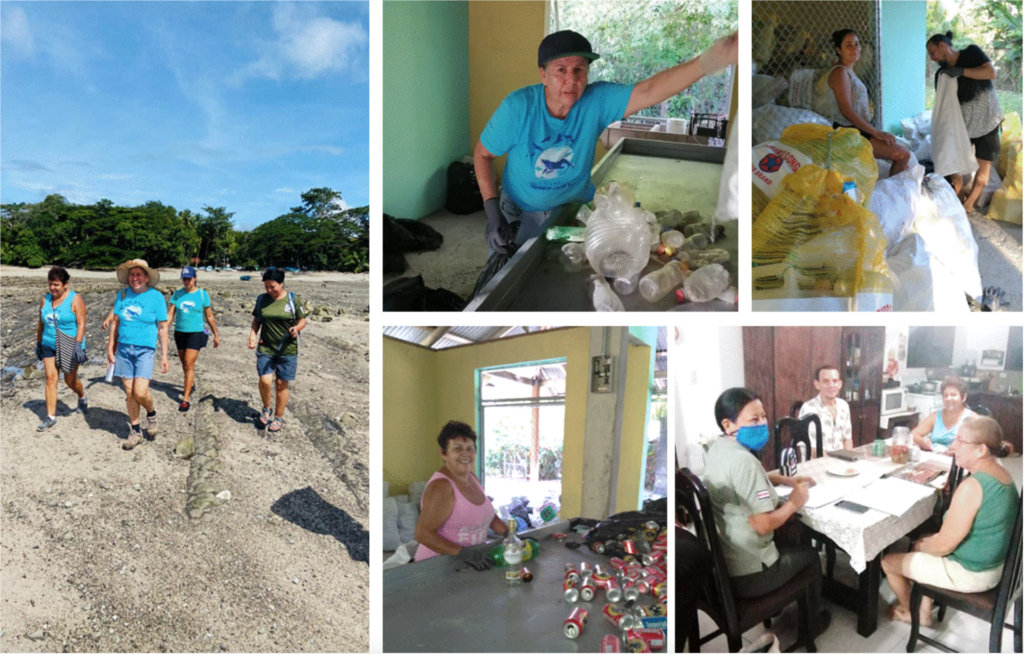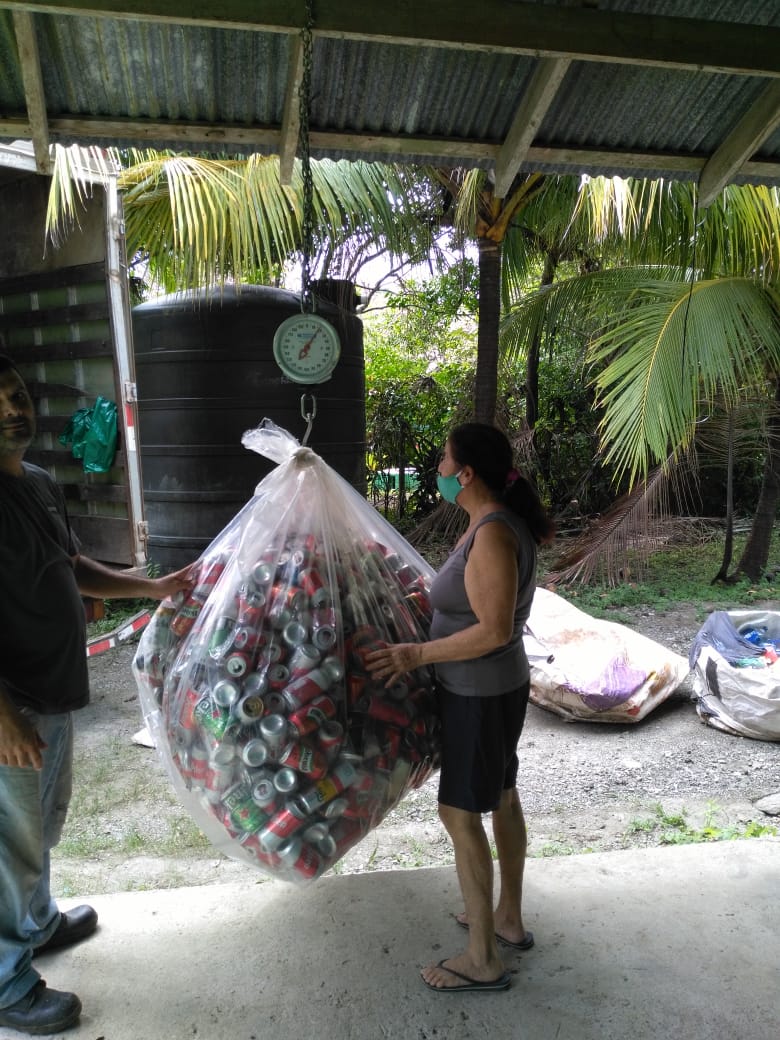How did it start?
Due to the need to create the conditions for waste management, from homes in the Cabuya community, in 2015, recycling campaigns began with some community leaders, which were sporadic. Then the Recycling Committee was formed, which is attached to the Cabuya Development Association, and is made up of women from the community, counting from the beginning with the leadership of our co-founder, Ms. Nia Ledezma and the support of the PEA (Environmental education program). And so, since 2015, the members of this Committee have contributed their time and knowledge voluntarily and continuously, managing over the years to position the “Cabuya Recicla” Campaign, and an alliance with the Cabo Blanco Absolute Nature Reserve.

Formalization of the Campaign
In 2017, the “Cabuya Recicla” campaigns began to be carried out every month, however, users demanded that it be carried out more frequently, for which it was necessary to formalize it every two weeks since 2018.
In 2020, the Committee, with the support of the PEA, drafts a proposal to present to the Board of Directors of the Cabuya Integral Development Association (ADIC), to expose the need to have a space for the recycling center. And this is how the ADIC agrees to lend the premises, which the Recycling Committee had been using informally, and to enable it as a collection center, warehouse and office. Due to the fact that it was in gray work and abandoned for more than 20 years, the ADIC contributed materials to the Committee, to condition and enable the space for the work of the Committee. Although there were no resources to pay for labor, the voluntary support of Doña Xinia (member of the Committee) and her husband should be highlighted.
Marketing of Cabuya Recycles Campaign
The dissemination of the Cabuya Recicla campaign is carried out especially through local social networks and the Committee’s own Facebook page (20+) Cabuya Recicla | Facebook





Where do the materials recovered in the campaigns go?
A little over half a ton of recoverable materials are recovered monthly, which were initially collected by the Molina Recycling company; but as of 2018, it coordinates directly with the recycling center of the local organization Water Keeper, “…which is a non-profit association, so if there are surplus funds after covering the costs of operations, these are invested in initiatives to keep the water CLEAN!” Waterkeeper-Bionic Recycling Center – Waterkeeper Peninsula de Nicoya (Source. Accessed June 27, 2021 at nicoyawaterkeeper.org),
… “thanks to an alliance with the materials engineering company BIONIC®, Nicoya Peninsula WATERKEEPER built a collection center in Cóbano for plastic processing. BIONIC® transforms plastic into high-quality polymers to be used in a wide range of applications including luggage, shorts, swimwear, shoes, furniture, dresses and suits. BIONIC® provided the funds and Vivero Lacon granted the use of a piece of land for WATERKEEPER to build and operate the center. In this center we can also process beach plastics that normally do not have the quality to be recycled because they have been in seawater and under the sun. This means that we also receive micro plastic and much of the garbage that is collected during beach cleanups. This is excellent news because the amount of plastic that reaches the beaches is constantly growing” (idem).
The material is delivered to Water Keeper, which generates a small fund, which has made it possible to solve situations such as turning on electricity, buying cleaning supplies, paying for fuel to clean the place and other basic needs. Both the material delivered to Water Keeper, as well as what is received mainly for the delivery of aluminum cans, is tracked in a log.
Our current needs :
– Matirials: gloves, bags, cleaning amenities.
– Suport with the electicity and drinking water
– Vehicles: one pick up truck to transport the plastic recovered from beach cleaning
– More marketing for donation collection

Progress over the years





